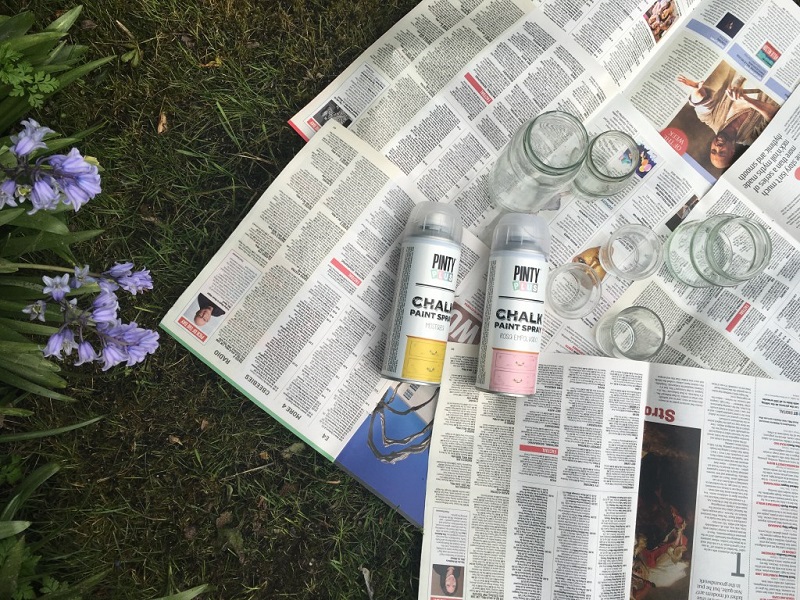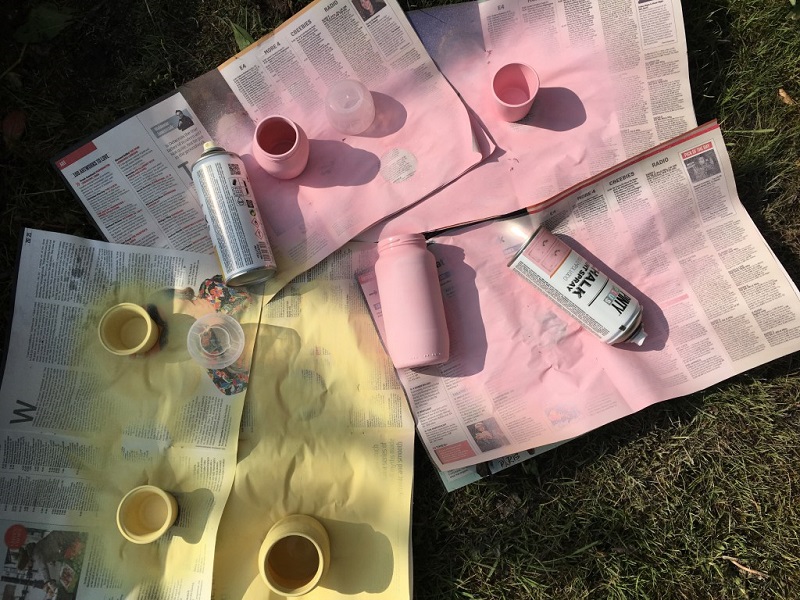Chalk paint has excellent adhesion on virtually any surface. However, when painting on non-porous surfaces, a number of considerations must be taken into account. So in this post we’ve created a guide of how to successfully use chalk paint on glass.
To illustrate, we show you a DIY project from the blog Coffee, Work, Sleep, Repeat with our chalk paint spray.
What do we need to paint glass with chalk paint?
In principle it will depend on the object that we are going to paint… If it is a glass object to which we are going to give a decorative use, it is sufficient to use chalk paint without priming and varnish or spray wax to protect the painting.
But, if it is going to be an intensive use, it’s sensible to use a spray primer before painting. In the following example you can see how our chalk paint spray has been used to paint glass jars that will be used as small vases.


Start by giving a very thin coat of chalk paint spray and wait a couple of minutes for it to be partially dry. To do this remember that you must first shake the can for one minute and keep it at a distance of about 25/30 cm from the object.
Then continue to paint equally light layers until the glass or glass is completely covered. Finish by applying Pintyplus spray varnish (matt or gloss) or Pintyplus spray wax.
In this way, the first layer causes the chalk paint itself to act as a primer with the varnish or wax providing a finish and causing the paint to harden and adhere a greater fixation to the support.
To ensure the adhesion of the paint to the chalk on a glass object that is going to have a more intensive use (for example, the top of a table), it is necessary to use a primer first. In the following video you can see how to apply the primer on glass and the advantages of using the spray format in front of the brush or roller.

